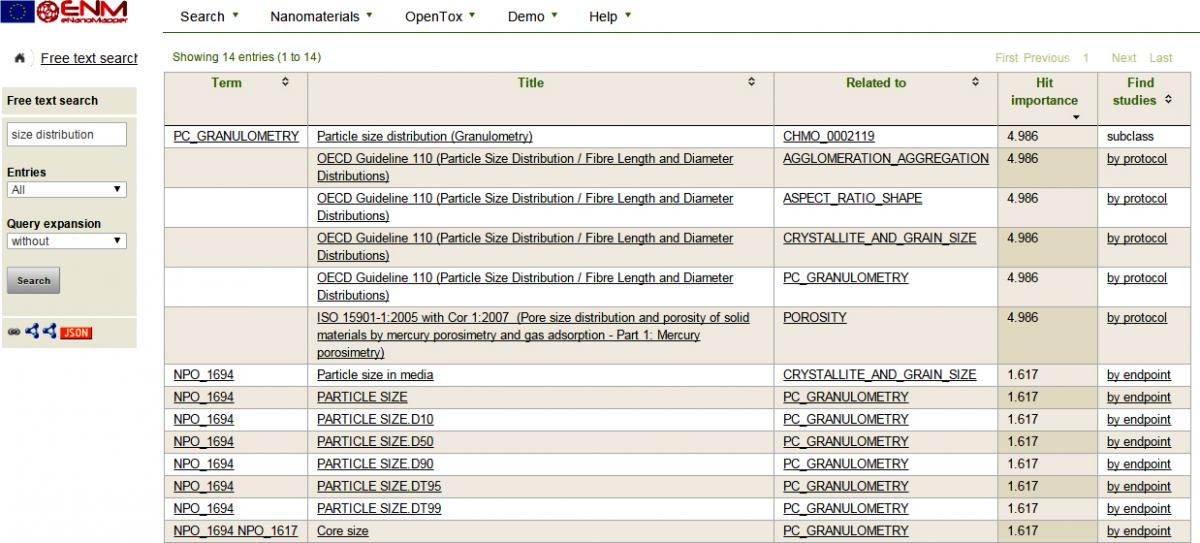Nina Jeliazkova1, Charalampos Chomenidis2, Philip Doganis2, Bengt Fadeel3, Roland Grafström3, Barry Hardy4, Janna Hastings5, Markus Hegi4, Vedrin Jeliazkov1, Nikolay Kochev1,6, Pekka Kohonen3, Cristian R. Munteanu7,8, Haralambos Sarimveis2, Bart Smeets7, Pantelis Sopasakis2,9, Georgia Tsiliki2, David Vorgrimmler10 and Egon Willighagen7
1Ideaconsult Ltd., Sofia, Bulgaria, 2National Technical University of Athens, School of Chemical Engineering, Athens, Greece, 3Karolinska Institutet, Stockholm, Sweden, 4Douglas Connect GmbH, Zeiningen, Switzerland, 5European Molecular Biology Laboratory – European Bioinformatics Institute (EMBL-EBI), Hinxton, United Kingdom, 6Department of Analytical Chemistry and Computer Chemistry, University of Plovdiv, Plovdiv, Bulgaria, 7Department of Bioinformatics, NUTRIM, Maastricht University, Maastricht, The Netherlands, 8Computer Science Faculty, University of A Coruna, A Coruña, Spain, 9IMT Institute for Advanced Studies Lucca, Lucca, Italy and 10in silico toxicology Gmbh (IST), Basel, Switzerland

Figure 1: Screenshot illustrating free text search finding ontology annotated database entries (e.g. protocols and endpoints in the second column). The last column is a link leading to a list of studies.
Abstract: The NanoSafety Cluster, a cluster of projects funded by the European Commision, identified the need for a computational infrastructure for toxicological data management of engineered nanomaterials (ENMs). Ontologies, open standards, and interoperable designs were envisioned to empower a harmonized approach to European research in nanotechnology. This setting provides a number of opportunities and challenges in the representation of nanomaterials data and the integration of ENM information originating from diverse systems. Within this cluster, eNanoMapper works towards supporting the collaborative safety assessment for ENMs by creating a modular and extensible infrastructure for data sharing, data analysis, and building computational toxicology models for ENMs.
Results: The eNanoMapper database solution builds on the previous experience of the consortium partners in supporting diverse data through flexible data storage, open source components and web services. We have recently described the design of the eNanoMapper prototype database along with a summary of challenges in the representation of ENM data and an extensive review of existing nano-related data models, databases, and nanomaterials-related entries in chemical and toxicogenomic databases. This paper continues with a focus on the database functionality exposed through its application programming interface (API), and its use in visualisation and modelling. Considering the preferred community practice of using spreadsheet templates, we developed a configurable spreadsheet parser facilitating user friendly data preparation and data upload. We further present a web application able to retrieve the experimental data via the API and analyze it with multiple data preprocessing and machine learning algorithms.
Conclusion: We demonstrate how the eNanoMapper database is used to import and publish online ENM and assay data from several data sources, how the “representational state transfer” (REST) API enables building user friendly interfaces and graphical summaries of the data, and how these resources facilitate the modelling of reproducible quantitative structure–activity relationships for nanomaterials (NanoQSAR).
(for full presentation, please visit this link)
